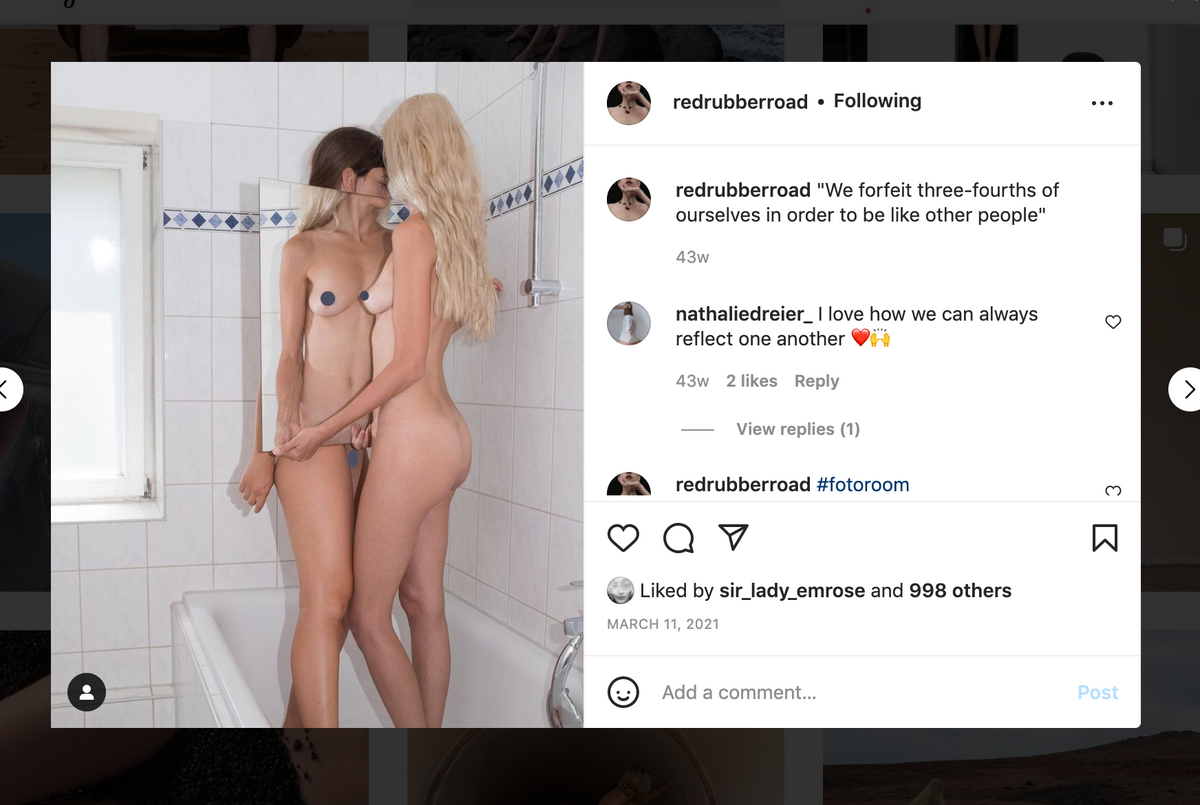When filmmaker Pedro Almodovar’s poster for Madres Paralelas (Parallel Mothers) was censored by Instagram for featuring an exposed female nipple last August, it seemed the slip-up would spotlight an issue of serious concern for many artists on the platform. Instead, while Instagram’s apology cited “clear artistic context” as Almodovar’s saving grace, the same context has continued to be hard to establish for countless artists who are censored daily. To survive on the platform, at-risk artists must navigate slippery logic through self-censorship and altered art practices, which begs the question: is Instagram’s censorship changing art itself?
Instagram’s guidelines explicitly allow nudity in art, but this has often proven subjective. Despite stating “photographs of paintings, sculptures, and other art that depicts nude figures” are acceptable, scores of artists’ images are removed for violations including “nudity” and “sexual activity”. Functionally, Instagram decides for their two billion users what counts as art, and punishes non-conforming artists with removals, account deletion and shadowbanning.
This risk leads some creatives to adapt their practice, like artist Savannah Spirit who says her “process changed significantly once I was being deleted off of Instagram”. Strategically incorporating shadows in an attempt to trick the censors, Spirit ultimately embarked on a body of work she would not have begun without the need to avoid censorship.
Alternatively, artists may alter an image by blurring or obscuring bits Instagram could flag. This amended image becomes a new, allowable version of the artwork, however marred in its presentation.
In other cases, artists may forego sharing any work that might put their account at risk. Duo Ana Hell and Nathalie Dreier’s self-portrait collaborative project Red Rubber Road was regularly caught in censorship’s sights. Opting now to play it safer, they sometimes “make videos or work that is specifically meant to be shown on social media. In this case, censorship rules directly affect that work and we try to only include imagery that won’t be taken down—sometimes that involves self-censorship and we try to do it in playful and humorous ways to highlight the absurdity.”
The implications of this censorship reach beyond Instagram, as Red Rubber Road points out. “We also have to be careful to censor our work when taking a photo of our exhibitions or publications” for fear of repercussions, they say. Instagram is not only affecting the art made, but even the events surrounding it—requiring artists to consider in “real” life what might jeopardise their account.
For many artists, their practice has become dual: the work they can show on Instagram, and the work they can’t. The unprecedented reach that Instagram provides artists leaves little doubt as to which of these dual practices is reaching a larger audience.
Instagram’s control over what counts as art is effectively changing the way art is made, shown and seen. While artists still hope that Instagram will one day abide by their own rules and not censor art, the future looks bleak. Savannah Spirit echos the sentiment of many: “I believe that nothing has changed. It's gotten worse.”
Emma Shapiro is an American visual artist and body equality activist based in Valencia, Spain


